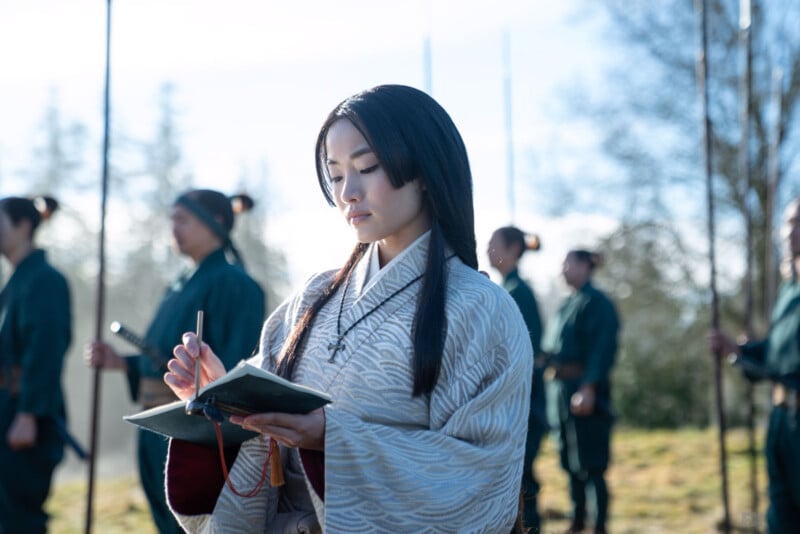![]()
The smash hit FX show Shōgun, based on a book of the same name, impressed viewers with dazzling visuals when it debuted earlier this year. The show earned 18 Emmy Awards this year, setting a new record, including one for “Outstanding Cinematography for a Series (One Hour).”
As noted by DPReview and in prior PetaPixel Podcast discussions, Shōgun employs a distinct, unusual visual language. While the show’s extreme distortion and falloff have rubbed some viewers the wrong way, it has resonated with industry experts — and its fair share of cinematography geeks.

In an American Cinematographer interview earlier this year, Shōgun‘s cinematographers, including Sam McCurdy, ASC, BSC; Christopher Ross, BSC; Marc Laliberté, CSC; and Aril Wretblad, FSF discussed how the recreated the world of medieval Japan and utilized a wide range of lenses to provide a distinct style to the hit show. McCurdy also chatted with American Cinematographer for a video interview.
The production used a variety of interesting cameras and lenses, including Sony Venice cameras with Hawk class-X anamorphic cinema prime lenses. The show was primarily shot in full 6K and then cropped to a 4K 2.0:1 aspect ratio, which is the limit of what the team could do for an FX show. The crew also used smaller cameras, like the Sony FX3, for certain scenes.
Shōgun relies heavily on fast apertures and shallow depths of field. The bokeh has a Petzval-swirl effect with some of the lenses, which is immediately evident in the show’s various trailers.

The crew also took a page out of the books of classic Japanese filmmakers with how they handled certain scenes, chose specific angles, and used different focal lengths. Specifically, when shooting interiors of characters seated, they used shallow shooting angles.
While each cinematographer brought their own unique style to the show, they also needed to fit within a broader, coherent vision, and color plays a significant role there. Much of the show’s color palette is muted, relying heavily on subtle Earth tones. This helps keep everything visually in the 17th century Feudal Japan setting, but it also makes little moments of color especially impactful.

“We all wanted the audience to feel a visceral first-person perspective of ‘Blackthorne’s’ plight in juxtaposition with the grandeur of the lives of ‘Toranaga’ and the other warlords in their castles,” explains Ross, Director of Photography for episodes one and two in an FX feature.
“Light and depth are always crucial elements when setting up any scene,” adds Wretblad, Director of Photography for episode three. “For Shōgun, we aimed to use natural light sources and enhance as needed…”

“[We didn’t use] split toning with warm scenes, no super slow motion to make things more epic, no unmotivated backlight, no glossy hyper blue for moonlight. No affected sources. Period,” Laliberté says.
At large, the filmmakers relied on Sony Venice and FX3 cameras, a Phantom Flex4K high-speed camera, and an Arri Mini LF. Beyond the Hawk class-X anamorphic lenses, Shōgun was also shot using Vantage One, Angénieux lenses, Arri and Zeiss primes, Laowa lenses, and Sigma Cine lenses. They even used a DJI Inspire drone for some of the scenes.
All cinematography fans owe it to themselves to give Shōgun a chance. The award-winning series is a masterclass in photography.
Image credits: FX
